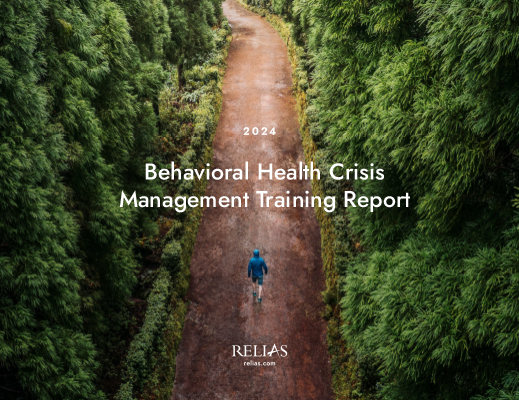Losing a direct support professional (DSP) can have a devastating effect on a person with an intellectual/developmental disability and their family. The relationship, the trust, and the knowledge of the individual’s desires and needs are critical losses of human capital when a DSP leaves a job. For the individual being served, it can mean the loss of a friend and confidante. For the family, a DSP’s leaving often creates stress, scheduling difficulties, and concern for the well-being of their loved one.
Because DSPs have a high turnover rate, IDD service providers are constantly hiring. But what these organizations may not realize is that DSP retention begins with the hiring process.
The characteristics of a successful DSPs
As an IDD service provider, what do you look for when interviewing DSP candidates? I’ve asked that question of providers across the country, and the same characteristics come up again and again.
 Empathy
Empathy
A cognitive attribute that involves an understanding of the inner experiences and perspectives of the person served, combined with a capability to communicate this understanding.
 Compassion
Compassion
A sustained emotional investment in an individual’s well-being, characterized by a desire to take actions that will benefit that person.
 Judgment
Judgment
A virtue consisting of soundness of and adherence to moral principles and character and standing up in their defense when they are threatened or under attack. This involves consistent, habitual honesty and a coherent integration of reasonably stable, justifiable moral values, with consistent judgment and action over time.
 Reliability
Reliability
A virtue consisting of being dependable in performing job-related tasks, finishing assigned projects, and meeting deadlines and appointments.
How DSP characteristics affect hiring
Think about your best DSPs. They probably demonstrate each of these characteristics every day. Maybe your good-but-not-great DSPs are strong in certain areas and weaker in others. Have you changed a DSP’s placement or responsibilities because of how well they do or do not exhibit these characteristics?
Wouldn’t it be great to know how a DSP candidate “scores” on these characteristics before you hire them and before you decide where to place them? Wouldn’t it also be great to have a more comprehensive picture of a person’s “softer” characteristics that are absolutely crucial for success in this often challenging, demanding position?
Pre-hire situational assessments
Situational assessments inform hiring decisions by providing data regarding characteristics essential to success in a job. We all know that an interview is a performance: the candidate tries to put forth the best possible version of themselves and to figure out what answers the interviewer wants to hear. A situational assessment lets you “peek behind the curtain” and get a better understanding of who the candidate is.
There are two important features a situational assessment must have in order to be an effective selection tool for candidates. First, it must be specific to the position the candidate is applying for. In order to be effective, the situations presented need to reflect circumstances the candidate could actually face on the job. (For DSP candidates, one tangential benefit of a DSP-specific situational assessment is that it provides a sort of “job preview” for people new to the field.)
Second, the assessments must be validated. The U.S. Equal Employment Opportunity Commission (EEOC, 1978) requires via its “Uniform Guidelines on Employee Selection Procedures” that any selection assessment demonstrate that it accurately measures what it purports to measure (also known as validity) and produces consistent results (also known as reliability) among those who take it for its intended purpose. Put another way, a pre-hire assessment must:
- Be linked to competencies, knowledge, skills, abilities, and/or characteristics tied to a specific job, task or responsibility
- Not discriminate against members of any race, sex, or ethnic group unless the assessment has been validated and is measuring factors considered to be bona fide occupational qualifications.
Using an assessment during the hiring process that is not validated could land an organization in legal trouble with the Equal Employment Opportunity Commission.
Using the results
Organizations that use situational assessments often give those assessments to their current employees in order to see how those who are least successful and most successful in the position score. That gives them a good “profile” to look for when hiring.
The results of situational assessments can also be used to inform placement decisions. You may find that the characteristics of your most successful employees in your day program are different from your most successful in-home workers. You may also find that DSPs who work well with some of your most challenging individuals exhibit a different profile of traits compared to other DSPs in your organization. Knowing this information ahead of time is powerful as you attempt to pair the best DSPs with those who need their support the most, so that they can provide the best possible care.
By using a situational assessment to make better hires and better placement decisions, IDD organizations can reduce turnover. They can identify candidates who are more likely to be successful in their jobs and are more likely to stick around. And retaining your employees, and thereby retaining their knowledge, skills, and relationships — your human capital — is an essential step to providing great services.

The 2023 DSP Survey Report
The 2023 Relias DSP Survey Report delves into these topics and more. It covers attributes that DSPs want in a supervisor, the types of recognition programs DSPs find most valuable, recommendations on how to build a great culture at your organization, and so much more.
Download the Report →





